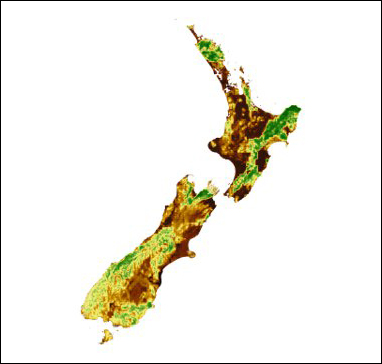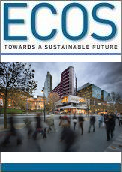
|
Published: 17 October 2011
‘Top down’ approach to biodiversity under climate change
In a recent ECOS article, Tim Low highlighted the importance of making robust predictions of climate change impacts on biodiversity. Formulating conservation and management strategies that best retain biodiversity into the future depend on such reliable predictions.1 We need to answer key questions such as ‘Where are the best places across the country to put new conservation reserves?’, and ‘Which areas should be the focus of restoration efforts?’
Ironically, one of the greatest impediments to predicting climate change impacts on biodiversity is the sheer number of species that we need to conserve. A recent estimate suggests that Australia has more than half a million native species.2
Through state and federal legislation, Australians have assumed the responsibility of custodian for these species. This means providing all of them with the opportunity to persist under a changing climate. To identify robust conservation and management strategies, predictions of climate change impacts need to be relevant to biodiversity as a whole – that is, to many species from many different taxonomic groups.3
Until now, most related ecological research has focused on predicting changes in the distribution of individual species in response to climate change.4 However, due to the substantial information collection and modelling effort required for each species, predictions for all species in a taxonomic group are only possible for a small number of well-studied taxa (e.g. birds, mammals, reptiles).5,6
In his earlier ECOS article, Tim Low also pointed out a number of practical challenges in accurately predicting the potential distribution of individual species.
For highly diverse, yet poorly studied taxa – such as plants, insects and marine invertebrates – alternative approaches are needed to predict climate change impacts relevant to all species. Enter ‘macroecology’, a scientific discipline that can predict changes in broad patterns of biodiversity over time.
Macroecological modelling is particularly valuable for highly diverse, poorly studied taxa, as it provides information relevant to all species: even those we know little about.
Two powerful macroecological modelling approaches involve predicting either changes in the number of species in each location, or dissimilarity in community composition between pairs of locations.7 Both approaches have demonstrated their value in predicting climate change impacts on diverse species within multiple taxonomic groups over large regions.8,9
CSIRO’s Macroecological Modelling team is now developing techniques for extending the capacity of macroecology to predict climate change impacts on Australia’s biodiversity.
One new approach10 combines models of species richness and compositional dissimilarity to predict the occurrences of all species across all locations over large regions. The same approach can directly predict the impacts of climate change on biodiversity, or form the basis for more mechanistic macroecological predictions of biodiversity change.
Macroecological modelling has significant untapped potential to complement the substantial research effort focused on predicting changes in the distributions of individual species under climate change. By providing predictions relevant to all species, it can help to formulate conservation and management strategies that best retain biodiversity under climate change.
Karel Mokany is an ecologist with CSIRO Ecosystem Sciences, developing new macroecological approaches to predicting climate change impacts on biodiversity.
1 Botkin DB et al. (2007). Forecasting the effects of global warming on biodiversity. Bioscience 57, 227–36.
2 Chapman A (2009). Numbers of Living Species in Australia and the World. Department of the Environment, Water, Heritage and the Arts, Canberra, p. 84.
3 Margules CR and Pressey RL (2000). Systematic conservation planning. Nature 405, 243–53.
4 Elith J and Leathwick JR (2009). Species distribution models: ecological explanation and prediction across space and time. Annual Review of Ecology, Evolution, and Systematics 40, 677–97.
5 Thuiller W et al. (2006). Vulnerability of African mammals to anthropogenic climate change under conservative land transformation assumptions. Global Change Biology 12, 424–40.
6 Hole DG et al. (2009). Projected impacts of climate change on a continent-wide protected area network. Ecology Letters 12, 420–31.
7 Mokany K and Ferrier S (2011). Predicting impacts of climate change on biodiversity: a role for semi-mechanistic community-level modelling. Diversity and Distributions 17, 374–80.
8 Ferrier S et al. (2010). Using generalised dissimilarity modelling to assess potential impacts of climate change on biodiversity composition in Australia, and on the representativeness of the national reserve system. Report for Department of Sustainability, Environment, Water, Population and Communities, Canberra.
9 Sommer JH et al. (2010). Projected impacts of climate change on regional capacities for global plant species richness. Proceedings of the Royal Society B 277, 2271–80.
10 Mokany K et al. (2011). Combining α- and β-diversity models to fill gaps in our knowledge of biodiversity. Ecology Letters 14, 1043–51.





